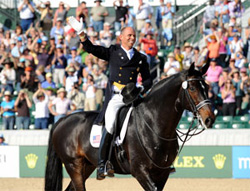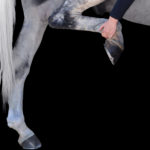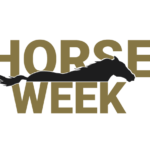October 10, 2010 — Having had the privilege of attending every World Show Jumping Championship since 1982, I can attest to the fact that the Final Four format to determine the individual title never fails to fascinate.
Seeing the participants ride the others’ mounts over the same course is a lesson in horsemanship, since they can only jump two practice fences. They’ve been watching each other all week, of course, as the original field of 120 here was narrowed to a quartet. But once in the saddle, they have to “read” each horse and adapt their own style in order to get around without knockdowns.

Last night at the Alltech FEI World Equestrian Games, however, the Final Four had another dimension, because for the first time, it included a contender from the Middle East–evidence that the sport continues to globalize from the days that the championship was primarily a European affair, often with an American thrown in for good measure.
On Friday evening, after the Four were winnowed from 30 riders in the semi finals, 28-year-old Abdullah Al Sharbatly of Saudi Arabia promised us a surprise on Saturday night. He came across as cocky and perhaps naive, but yesterday, he delivered.
Abdullah wound up with the silver medal, as Olympic individual gold medalist Eric Lamaze of Canada took the bronze and the gold went to 50 year-old master horseman Philippe Le Jeune of Belgium, who rode in his first Nations’ Cup 30 years ago. The most decorated of the riders, Brazil’s Rodrigo Pessoa, past Olympic gold medalist, World Cup winner and world champion, finished out of the money.

An excited Abdullah, who was on his cellphone even while standing on the medals podium (would you say that’s a 21st Century thing to do?) emphasized that his award was “a great moment for me and my country,” noting it was “the first time in history that someone from the Middle East can reach the top four in the world championship.”
The awards were presented by FEI President Princess Haya, herself a native of Jordan.
Interestingly, the Saudis are revving up for a big showing at the 2012 London Olympics, and when Abdullah got together with his mare, Seldana di Campalto, that was his focus.
“I love this horse and I believe in her,” said Abdullah, who originally felt “it was too early for her and me to do the world championships.”
You see, the British-educated Abdullah and his horse had only six weeks together, which makes his achievement even more impressive. The two rails they knocked down in the first round were the only faults they logged all week.
His trip on Eric’s horse, Hickstead, in which he went full-tilt, looked as if he might come to grief, but he emerged from it fault free.
While some may have thought of him as the underdog in elite company, Abdullah didn’t.
“I had a lot of confidence in myself,” he explained.
In the stadium after the class, I ran into Beezie Madden, the silver medalist at the last WEG, and asked her: “If I told you a year ago that an Arab guy I’d never heard of was going to beat Rodrigo Pessoa here, would you think I was crazy?”
“Probably,” she said.
But her husband, John, had a completely different answer. Unlike me, he knew all about Abdullah, who was the children’s jumper world champion when he was a kid. Besides, John added, “Anything can happen.”
And so it did. I figured Abdullah (who has become a professional and is basing himself in Belgium with Saudi coach Stanny Van Paesschen, a former teammate of Philippe’s) was through when he had the 8 faults to start off. His Dutchbred mare, formerly with the Italian team, was distracted by a shadow and toppled rails at the second and third elements of the triple combination on the last line.

But then he went on to produce faultless trips over the same course with Rodrigo’s little Mexican stallion HH Rebozo and Philippe’s Vigo D’Arsouilles, as well as Hickstead. Pretty impressive, especially since Rodrigo had 4 faults with his own horse and two rails down with Philippe’s for a total of 12. Philippe was fault-free with each horse for a perfect score, while Eric had a rail with Seldana and another with Rebozo, while also accumulating a time fault, 9 penalties altogether.
The award for Best Horse went to Hickstead, a Dutchbred stallion who had no faults with any rider. Asked how he felt about having the best horse, Eric said, “I think we already knew it before today. Now these three other riders know it for themselves.”
As always, course designer Conrad Homfeld, with Richard Jeffery’s help handling the architectural detail of the fences, set the stage perfectly as the curtain came down on show jumping at the WEG.
While the other courses paid tribute to things Kentuckian, the 10 jumps this time included tributes to the participants’ home countries; the Canadian fence, for instance, bore the maple leaf image, while the Belgian fence was done in the national colors of red, yellow and black.

The low-key Philippe seems a worthy gold medalist, and not just because of his riding ability. He made a point of patting each horse he rode, before and after, taking the time to appreciate each of them and trying to make a connection, despite the tension of the competition.
“When I was a young boy,” he recounted in his accented English, “my father learned me to love animals. I love animals more than people. My life is dedicated to my horses. I have two sons, they are my flesh and my blood, but the rest I dedicate all my life to the horses. The first thing for me is get on the horses, feel them and love them.”
His wish, he added, “is that if the horses could speak that they would be happy to stay at my place.”
Philippe paid tribute to his horse’s owner, Joris de Brander, who let him keep Vigo rather than selling the chestnut Belgian-bred stallion when he had a big offer.
“I’d rather sit on the horse,” he said, with great sincerity. “I don’t care about the money.”

If there were a star country in the WEG, it has to be little Belgium. The Belgians took the silver medal in reining and the team bronze in show jumping, as well as the show jumping individual gold. Don’t forget that Jos Lansink, another Belgian (in the interests of disclosure I will tell you he was a native of the Netherlands who became Belgian) also won the last world championship in 2006. The size of a country, apparently, has nothing to do with its equestrian success. Another plus: they make my favorite kind of chocolates.
There wasn’t a capacity crowd last night, but most of the seats were filled. I got the feeling that the spectators really appreciated and understood what they were seeing, an extraordinary opportunity that comes only once every four years.
It seemed at times as if this WEG would never end; 16 days is a long horse show. But it’s rushing to the finish line today, and so am I.
I’ll be back to wrap things up, including the driving medals, tonight.
Until then,

Visit EquiSearch.com’s World Equestrian Games headquarters for news, blogs, photo galleries and more!






